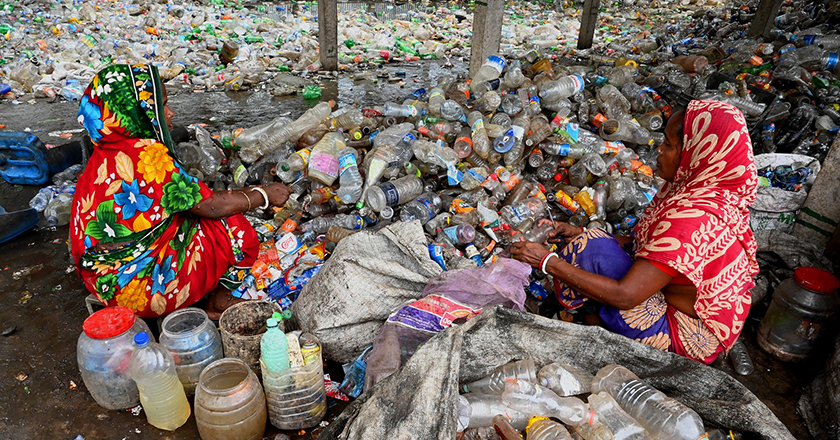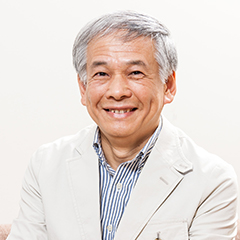Environmental justice in the issue of plastic waste
“Environmental justice” originated in the United States, so it may be a little difficult for Japanese to understand the concept from these words.
Briefly, the burden caused by environmental pollution and destruction by humans is unevenly distributed in society.
And people who are unfairly burdened have difficulty in taking a stand.
Also, many people in society lack awareness and understanding of such situations. Environmental justice can mainly be defined by these three points.
One specific example is that Japan had “exported” plastic waste to China and Southeast Asia.
As you know, plastic waste is a serious problem around the world, as it leads to the destruction of nature, including the oceans. In Japan, however, separation and collection is progressing and the streets are clean. People tend to think that there is no environmental pollution or destruction.
However, few people know what happens to the collected plastic waste.
Some is recycled, but it was actually exported to China and Southeast Asian countries in the name of “resources.” In short, Japan had been pushing plastic waste to those countries.
However, in 2018, China announced a ban on the import of plastic waste. Instantly, more plastic waste than can be recycled started to overflow in Japan.
This means that Japan had unevenly distributed the burden caused by the production of plastics by exporting them, and many Japanese had been thinking that Japan had no environmental problems caused by plastics.
Moreover, it was imposed on economically developing countries. They had not been able to take a stand on what Japan was doing and had been unfairly burdened. The fact that China, with its growing economic power, said no to Japan symbolizes this problem.
Concept of environmental justice originated in the United States
As mentioned earlier, environmental justice is a concept that originated in the United States. The reason behind this is that the approach to environmental problems in the United States was exactly the opposite to that in Japan.
In Japan, pollution was often taken up as an environmental problem, such as the mining pollution incident at the Ashio Copper Mine, and after the war, Minamata disease, Yokkaichi asthma, and Itai-itai disease in Toyama.
On the other hand, in the United States, the logging and destruction of old-growth forests on a large scale, which would be unimaginable in Japan, had been conducted, as well as overexploitation that has driven wildlife to extinction, since the pioneer days. Therefore, they have brought attention to natural conservation. What is more, the main role was played by wealthy white men who enjoyed mountain climbing, etc., on holidays.
At that time, when I went to the United States and did some research on environmental issues, white men would come out and always talked about things such as the extinction of the Spotted Owl.
When I asked them if there was pollution, which had been the problem in Japan, in the United States at that time, they said that campaigns to complain about pollution seemed to be carried out in industrial areas where people of color lived.
I went there. It was a town where certainly no white people lived at all. The factory pumped out smoke, and many children had asthma.
There were Black people who complained about this situation, but the media did not cover it, and the white men who were running the environmental movement did not really know or care.
In the 1980s, there were plans to dump industrial waste containing hazardous substances in African-American neighborhoods. A Black member of Congress who campaigned against it surveyed waste landfills in the past and found that they were located only in areas where large numbers of Black and people of color lived.
In the United States, the civil rights movement has been active since the 1960s, and social movements for equality and rights for people who suffered from racial discrimination and various disparities have spread.
Although those movements and environmental issues had been considered separately, the industrial waste problem led to the concept of environmental racism, which spread to environmental justice activities.
Once these concepts are developed and put into words, the reality of major environmental pollution and destruction caused by racial discrimination became clearer rapidly.
For example, after World War II, the development and use of nuclear technologies had been promoted all over the world. When operating nuclear power plants and other facilities, great care was taken to prevent radiation exposure and contamination. However, the management of mines for uranium that powers the nuclear power plant was very loose.
For instance, only about 0.7% of the uranium could be used for nuclear fission, and 99.3% of the uranium that had been mined could not be used and was left as it was. However, such uranium is also radioactive and very dangerous to mine workers and nearby residents.
Why did that happen? There may have been a lack of scientific knowledge whereby people thought it was just a rock if it had not been refined. But in fact, I think the reason was that most of the mountains where uranium was produced were located in the settlements of indigenous people, so-called Indians.
For example, Navajos with large uranium mines in their settlements now have a cancer rate 17 times higher than the national average. However, this has not made national headlines.
This means that most people in New York and Washington, who enjoy rich and comfortable lives, do not know these facts. They do not know that there is environmental pollution caused by radiation in the United States or that there are people exposed to radiation.
Behind these environmental injustices lies the problem of discrimination against races and ethnic minorities. The idea of environmental justice is to correct them.
Environmental justice issues, which Japanese must also consider
Of course, environmental justice is not an issue just for the United States. In fact, the pollution problems that have occurred in Japan are also caused by the power relationships and disparities between large companies and the local residents who depend on those companies for employment. That delayed the discovery of environmental pollution.
But what was different from the United States was that since Japan has a universal health insurance system, medical personnel and public health centers were aware of the health damage to residents. In addition, the government and companies that have caused problems implemented compensation and support more positively than in the United States and other countries.
However, to put it the other way around, compensation to local governments, which is a kind of inconvenience fee, makes the reality of environmental injustice difficult to be noticed.
For example, if a nuclear power plant is built, a subsidy will be given to the region. When the subsidy expires, some local governments even build new reactors.
However, this has obscured the risks posed by nuclear power plants and the unfair structure of rural areas at risk and urban areas where people can live comfortably without risks using electricity generated in rural areas.
Many urban dwellers, who are living in clean cities and not aware of environmental problems on a daily basis, are living a life made possible by imposing risks on the weak, so to speak. Looking at Japan as a whole, we must recognize that environmental pollution, destruction, and risks are increasing.
In this sense, it is necessary to stop considering discrimination, inequality, and environmental problems separately and to consider them under the concept of environmental justice.
This issue must also be viewed from a global perspective, not just within Japan. In recent years, waste electronics and mercury have also become major problems as well as the issue of plastic waste mentioned above.
We enjoy convenient lives with PCs and smartphones, but do you know what happens to those devices after we replace them every few years?
In Accra, the capital of Ghana in Africa, waste electronics are brought in from all over the world. The waste is burned at riverbeds and other places, generating large quantities of brominated dioxins. Japanese people probably know well what kinds of health hazards this poses.
But in Ghana, it is actually children who are doing it. They are doing it to find valuable copper wires, etc., among the burnt remains and sell them. This goes toward the cost of living for their family.
It is the same for mercury. In Japan, the use of mercury in thermometers, blood pressure monitors, and other equipment has decreased significantly. However, if there is mercury-using waste, mercury is carefully separated. Even now, about 100 to 200 tons of waste mercury is produced annually.
In fact, there are countries that ask for the waste mercury. Mercury adsorbs gold, so it is used to extract gold from river soil.
It is called small-scale gold mining because it is carried out by families and so on and is done in various places around the world, such as the Amazon river basin in Brazil. As a result, symptoms like those of Minamata disease are frequently seen in the local residents.
In Japan, where waste mercury is carefully separated and disposed of, environmental pollution by mercury may no longer occur. However, on a global scale, mercury pollution is progressing due to “exports” from developed countries.
Behind this is the problem of poverty, in which people can earn a living only by mining a small amount of gold even if they suffer health damage.
As Japan and urban areas become cleaner, it becomes harder to see the inequality, injustice, and environmental problems of the entire planet. Only by taking these as issues of environmental justice and considering and implementing measures will each and every problem move toward a resolution.
* The information contained herein is current as of November 2022.
* The contents of articles on Meiji.net are based on the personal ideas and opinions of the author and do not indicate the official opinion of Meiji University.
* I work to achieve SDGs related to the educational and research themes that I am currently engaged in.
Information noted in the articles and videos, such as positions and affiliations, are current at the time of production.


